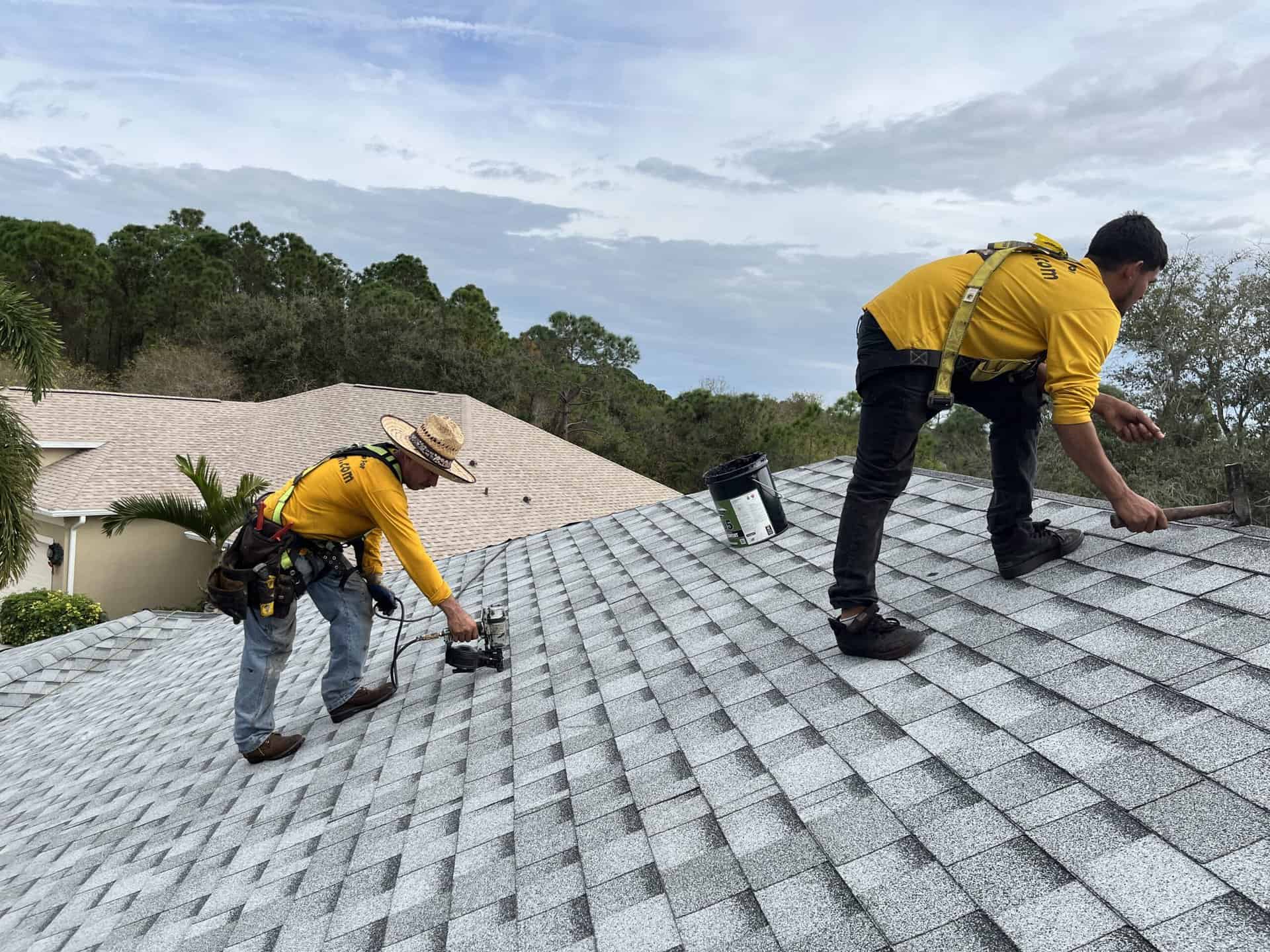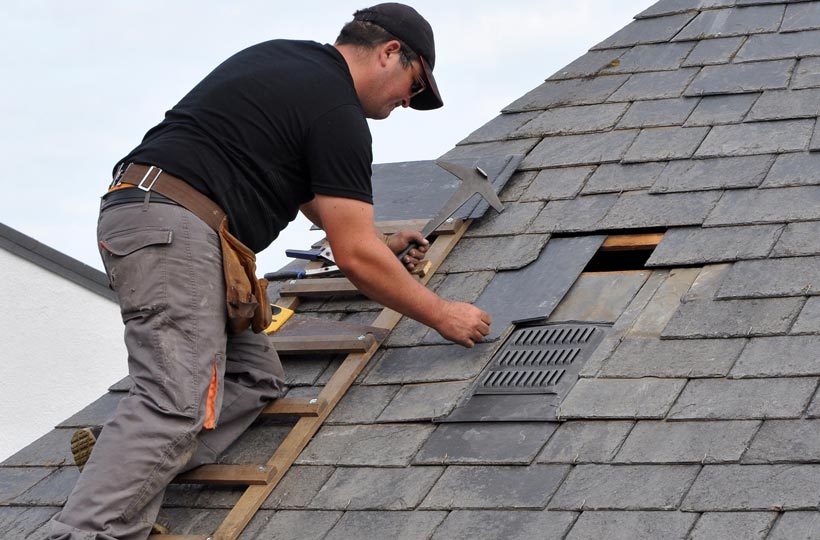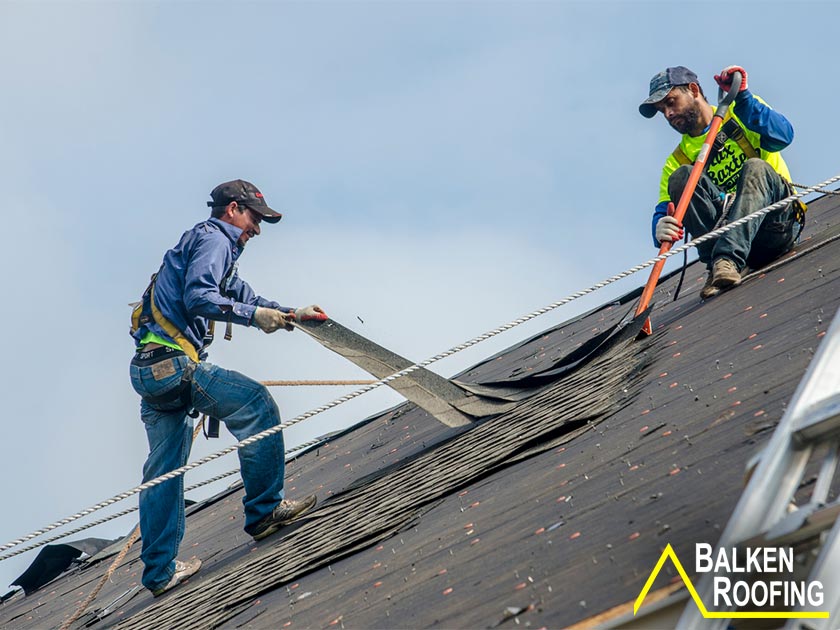Roof Repair Explained Clearly: The Basics You Can’t Ignore
Wiki Article
Indicators You Required Roofing Repair: Shield Your Investment With These Easy Checks
Understanding the indicators that suggest a demand for roofing system repair is critical for safeguarding your residential or commercial property and financial investment. Common indications such as missing roof shingles, unforeseen water stains, and granules collecting in seamless gutters can recommend underlying concerns that, if left unaddressed, might escalate right into even more significant issues. Furthermore, indicators like sagging locations or raised energy bills can additionally indicate inefficiencies or damages. To assure your roofing remains in leading problem and to prevent pricey repair work, it is important to recognize these early caution signs and act as necessary. What steps should you take following?Missing or Damaged Tiles
When evaluating the condition of your roof covering, one of the most telling indicators of potential problems is the existence of missing or damaged shingles. Tiles function as the first line of protection against the components, and their stability is essential for keeping the total wellness of your roof covering system - I&E Roofing & Construction, Inc.. A few missing out on roof shingles may appear small, but they can bring about considerable water seepage, endangering the underlying framework and demanding extra extensive repairsDamaged roof shingles can manifest in different ways, including curling, fracturing, or blistering. Each of these problems can lower the efficiency of your roofing, enabling moisture to pass through and lead to extra extreme troubles. Roofing Service. It is vital to carry out normal assessments, specifically after serious weather condition occasions, as high winds and heavy rain can aggravate roof shingles deterioration
If you recognize missing out on or harmed shingles, it is recommended to address these issues promptly. While minor repairs might be convenient for a property owner, extensive damages usually warrants professional intervention. Prompt activity can prevent more problems and secure your financial investment, making certain the longevity and performance of your roofing.
Water Discolorations on Ceilings
Water discolorations on ceilings are frequently clear indicators of underlying water damages that requires prompt interest. Identifying the resource of these stains is important, as they can arise from numerous problems, consisting of roof leakages or plumbing problems. Dealing with the source not just protects against further damage yet also secures the stability of the home.Recognizing Water Damage

When checking for water stains, take note of both the shapes and size of the discoloration. Uneven forms may recommend recurring leaks, while extra specified areas might suggest past problems. Furthermore, think about the location of the discolorations; stains near pipes fixtures or exterior wall surfaces may offer ideas regarding possible sources of the water breach.
It is also vital to check out the appearance of the ceiling surrounding the spots. Peeling off paint or bubbling drywall can signify considerable dampness direct exposure, calling for immediate interest. Regular assessments and punctual action can help protect against much more serious water damages, securing both the structural integrity of the home and the investment it represents. Always speak with a specialist for a complete evaluation if you discover water discolorations on your ceilings.
Reasons for Discolorations
What elements contribute to the look of stains on ceilings? Water spots, typically materializing as blemished patches, are mostly brought on by leakages in the roof covering or pipes systems - I&E Roofing & Construction, Inc.. When wetness permeates through roof covering materials or jeopardized pipes, it can accumulate and bring about noticeable staining on ceilingsOne common reason is harmed or missing out on roof shingles, which can permit rainwater to leak into the attic room and, eventually, to the ceilings below. In addition, incorrect flashing around chimneys, vents, or skylights can be a substantial resource of water invasion. Plumbing leakages, whether from malfunctioning pipes or overruning components, can also develop stains, specifically in areas directly listed below shower rooms or cooking areas.

Recognizing the resource of the stain is essential for reliable repair. Ignoring these indications can bring about a lot more extensive damages, consisting of mold development and architectural weakening, underscoring the relevance of timely treatment to secure your financial investment.
Granules in Rain gutters
During regular evaluations of your rain gutters, the visibility of granules can be a substantial indicator of roof degeneration. These tiny, sand-like particles are generally discovered on the surface of asphalt roof shingles, functioning as a safety layer against UV rays and weathering. Gradually, wear and tear can trigger these granules to remove, bring about a range of concerns that might jeopardize the honesty of your roofing.If you notice a buildup of granules in your gutters, it is vital to take this indicator seriously. The loss of granules may reveal the underlying asphalt to the elements, boosting the danger of leakages and water damages. This scenario not just jeopardizes your roof covering's life expectancy but can likewise cause pricey fixings otherwise addressed quickly.
To alleviate prospective damages, it is suggested to evaluate your roof covering regularly, particularly after extreme weather events. Additionally, involving a professional roofer to evaluate the problem of your roof shingles can offer beneficial insights. Early treatment is essential to preserving your financial investment and ensuring the durability of your roof. Remember, granules in gutters are not a trivial worry; they indicate the requirement for instant interest and potential repair.

Sagging Roof Areas
Drooping roof areas can suggest major architectural issues that need instant attention (Roofing Service). Visible deformities on the roofing's surface, combined with the existence of water discolorations inside the home, are critical caution indicators that ought to not be ignored. Addressing these problems quickly can stop additional damages and pricey fixingsNoticeable Roofing Defects
How can property owners recognize potential issues with their roofs? Among one of the most telling indications is visible roofing deformities, especially drooping areas. A sagging roofing system might appear as dips or contours, indicating underlying architectural troubles that might compromise the stability of the entire roof covering system. House owners need to conduct normal evaluations, looking for any recognizable irregularities in the roofline.
Numerous elements can contribute to noticeable defects, including water damages, improper setup, or the weight of accumulated snow and particles. If a roof covering shows up to sag, it might suggest damaged rafters or trusses, which can cause much more extreme issues if left unaddressed. A drooping roofing system not just jeopardizes the architectural stability of the home but can also lead to pricey fixing expenses if the problem escalates.
If drooping or various other visible deformities are observed, it is a good idea to consult an expert roof professional. They can evaluate the situation, identify the source of the sagging, and recommend proper repair remedies. Timely treatment is important to safeguard your investment and ensure the durability of your roof covering.

Water Spots Inside Home
The existence of water discolorations inside the home usually indicates possible problems with the roofing system, particularly in locations where sagging has been observed. These stains generally indicate that water is penetrating with the roof covering material, which can lead to considerable architectural damage if left unaddressed. Drooping roof covering locations may be brought on by a variety of variables, consisting of insufficient assistance, collected dampness, or the degeneration of roofing materials.When you observe water stains, it is vital to examine the source of the dampness. Try to find signs of sagging in the roofing structure, as this can exacerbate the trouble. Typically, drooping locations can catch water, leading to leaks and additional damage. In addition, it is important to assess the age of the roof covering; older roofs are more at risk to deterioration, boosting the probability of leakages.
Trigger action is needed to minimize damage. Consult a certified roofing specialist to assess the circumstance and suggest suitable repairs. Ignoring water stains and sagging can cause expensive fixings and endanger the integrity of your home. Protect your financial investment by dealing with these indicators before they rise into a lot more extreme problems.
Enhanced Power Costs
An unforeseen spike in energy costs can usually signal underlying concerns with your roof. When your roofing is jeopardized, it can cause substantial air leaks, enabling conditioned air to get away and unconditioned air to penetrate your home. This inefficiency forces your heating and cooling systems to work harder, resulting in enhanced energy usage and greater energy prices.One common wrongdoer is damaged or missing out on shingles, which can expose your home's inside to the aspects. Additionally, inadequate insulation because of roof covering damage can add to energy loss. If you observe a regular increase in your energy costs without a matching adjustment in use habits, it is crucial to explore potential roof-related problems.
Normal roofing assessments are necessary for identifying troubles before they rise into expensive repair services. Search for visible signs of wear, such as drooping areas, cracks, or voids. These might show that your roof is no more offering the necessary obstacle versus the aspects. Attending to these problems without delay can assist restore your home's energy effectiveness and secure your financial investment in the future. If you think a problem, seek advice from a roof expert for a comprehensive analysis.
Mold or Mildew Development
Mold or mildew growth on your ceiling or wall surfaces can be a clear sign of roof-related problems, specifically when moisture infiltrates your home. These fungis prosper in damp environments and can posture severe health and wellness dangers, including respiratory troubles and allergic reactions. Their presence usually recommends that your roofing might be endangered, enabling water to seep in via leakages or voids.To evaluate the scenario, try to find dark spots or staining on surfaces, generally in locations close to the roofline or where water might collect (Roof Repair Company). Additionally, look for any type of water discolorations, peeling off paint, or soft areas in your ceiling or walls, which might indicate ongoing dampness problems
If you discover mold or mold, it is vital to act rapidly. Not only can proceeded wetness damage your home's structural honesty, yet it can additionally cause costly fixings down the line. Engaging a professional professional roofer can assist identify the resource of the trouble, whether it's damaged tiles, incorrect ventilation, or other problems. Normal evaluations and upkeep can assist protect against mold and mildew development and shield your investment, making sure a secure and healthy living setting.
Age of the Roofing
Assessing the age of your roofing is important in identifying its total problem and potential demand for repair services. The majority of roof materials have a certain life expectancy, generally varying from 15 to thirty years, relying on the kind of product utilized. Asphalt shingles, for example, usually last concerning twenty years, while steel roofing systems can withstand for 40 years or more. As roof coverings age, they come to be more susceptible to damage from weather condition, parasites, and various other ecological elements.Regular examinations are very important for roofings older than 15 years. Indicators of wear, such as broken or curling shingles, missing out on ceramic tiles, or corrosion on metal surface areas, suggest that your roof covering might require instant focus. Additionally, inner signs like water stains on ceilings or walls can indicate underlying problems linked to an aging roofing.
If your roofing is approaching its expected life expectancy, think about speaking with a specialist roofing contractor for a comprehensive evaluation. They can give understandings on fixing options or advise a substitute if required. Positive administration of an aging roofing system can prevent costly damage to your home and assurance that your investment remains protected.
Regularly Asked Concerns
How Frequently Should I Check My Roofing for Damage?
Regular roofing system evaluations are vital for keeping the stability of your home. It is advisable to evaluate your roofing system at the very least twice a year, preferably in the spring and loss, to recognize any type of potential issues at an early stage. Additionally, after severe weather condition events, such as hefty tornados or hailstorm, a detailed examination is suggested. Resolving minor damage promptly can avoid costly repair services and expand the life-span of your roof considerably.Can I Repair My Roofing system Myself?
While it is feasible to repair your roof covering on your own, it is necessary to evaluate your abilities and the intricacy of the damage. Minor issues, such as replacing a couple of roof shingles, might be workable for a do it yourself enthusiast. Nevertheless, significant fixings or architectural worries often need expert know-how to assure safety and security and compliance with building codes. Constantly prioritize your safety and security and take into consideration seeking advice from a roof specialist for extensive damages or if you doubt regarding the repair services.What Are the Usual Root Causes Of Roof Covering Leaks?
Typical root causes of roof leakages include damaged shingles, which can take place because of age or extreme weather condition, and improperly secured vents or blinking that may enable water penetration. In addition, stopped up rain gutters can cause water back-up, leading to leakages. Structural issues, such as drooping roofing systems or compromised underlayment, also contribute to this trouble. Routine evaluations and maintenance are essential to recognize these vulnerabilities and protect against costly damages to your residential property.Exactly How Can I Choose a Reputable Roofer?
Choosing a trusted roof covering professional includes extensive research study and analysis. Beginning by seeking referrals from trusted sources and examining on-line evaluations. Verify the service provider's licensing, insurance, and experience in roof jobs comparable to yours. Request detailed estimates and compare them for transparency. In addition, ask about warranties and post-installation assistance. A respectable contractor should interact clearly and demonstrate expertise throughout the process, guaranteeing your investment is well shielded.What Is the Average Lifespan of Different Roofing Materials?
The ordinary lifespan of roofing products varies significantly. Asphalt shingles generally last 15 to three decades, while steel roof coverings can endure 40 pop over here to 70 years. Wood drinks generally have a lifespan of 20 to 40 years, whereas clay or concrete floor tiles can surpass 50 years with correct maintenance. Finally, artificial roofing materials might offer durability similar to conventional alternatives, commonly lasting 30 to half a century. Comprehending these life expectancies help in planning for maintenance and substitute.Report this wiki page